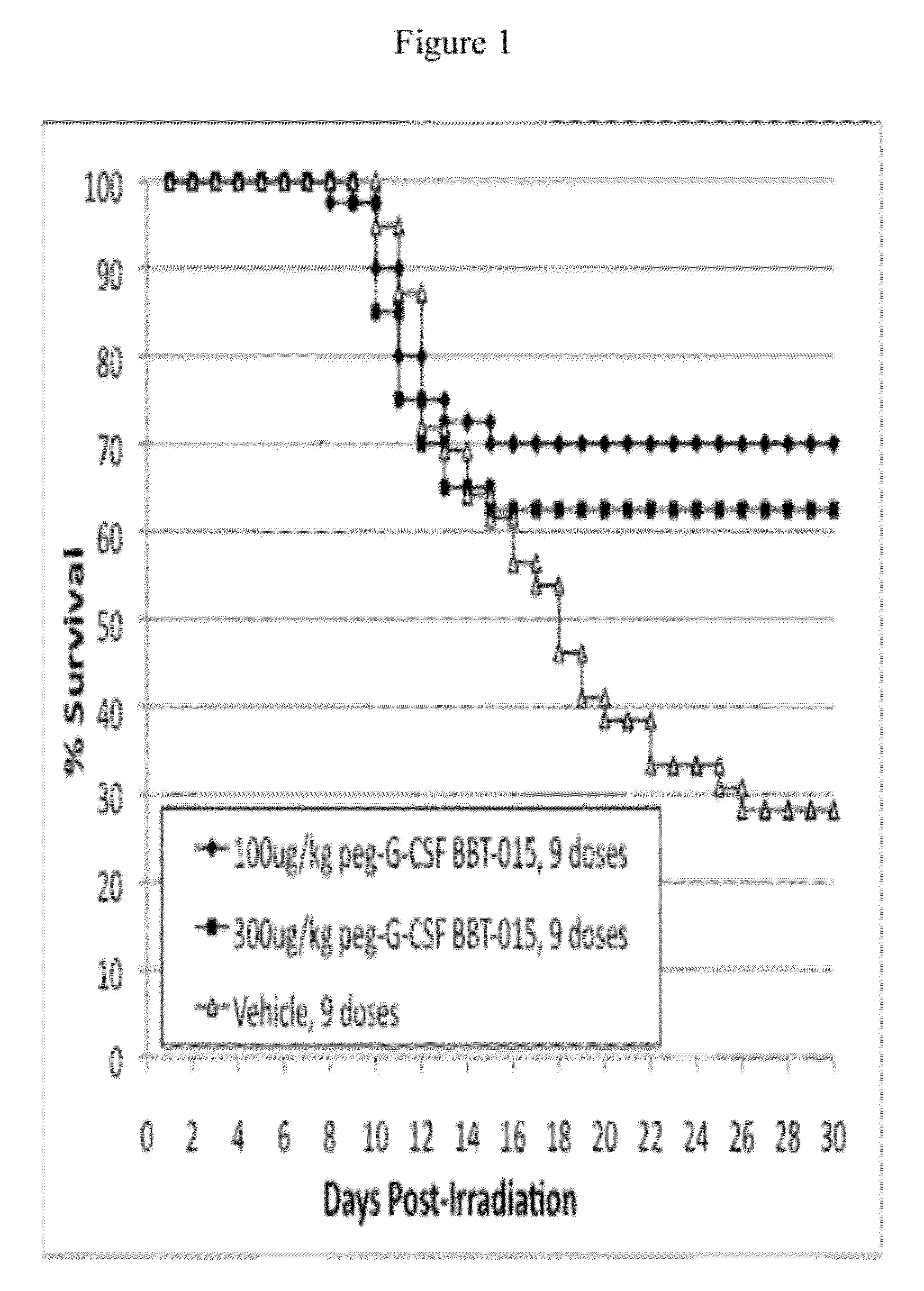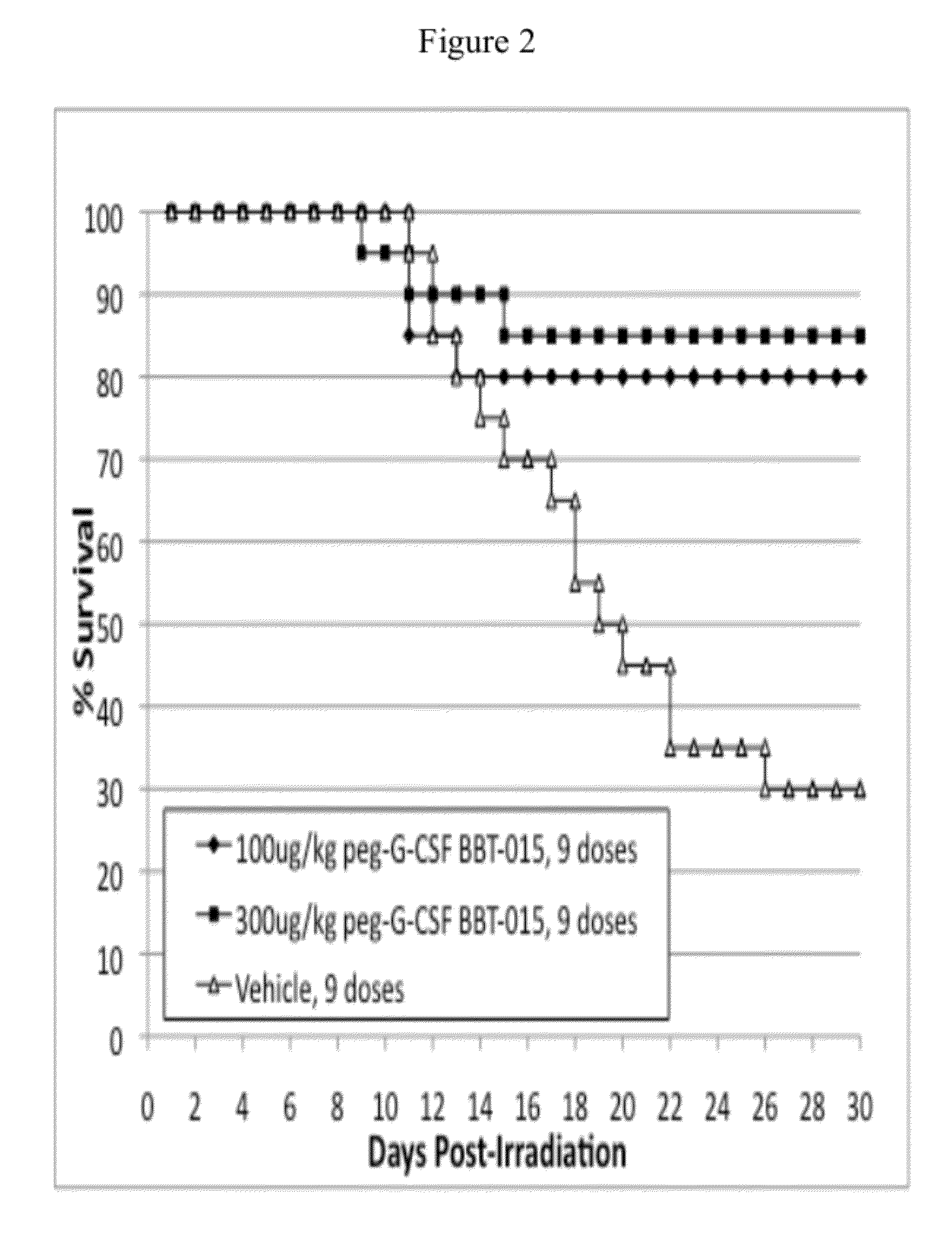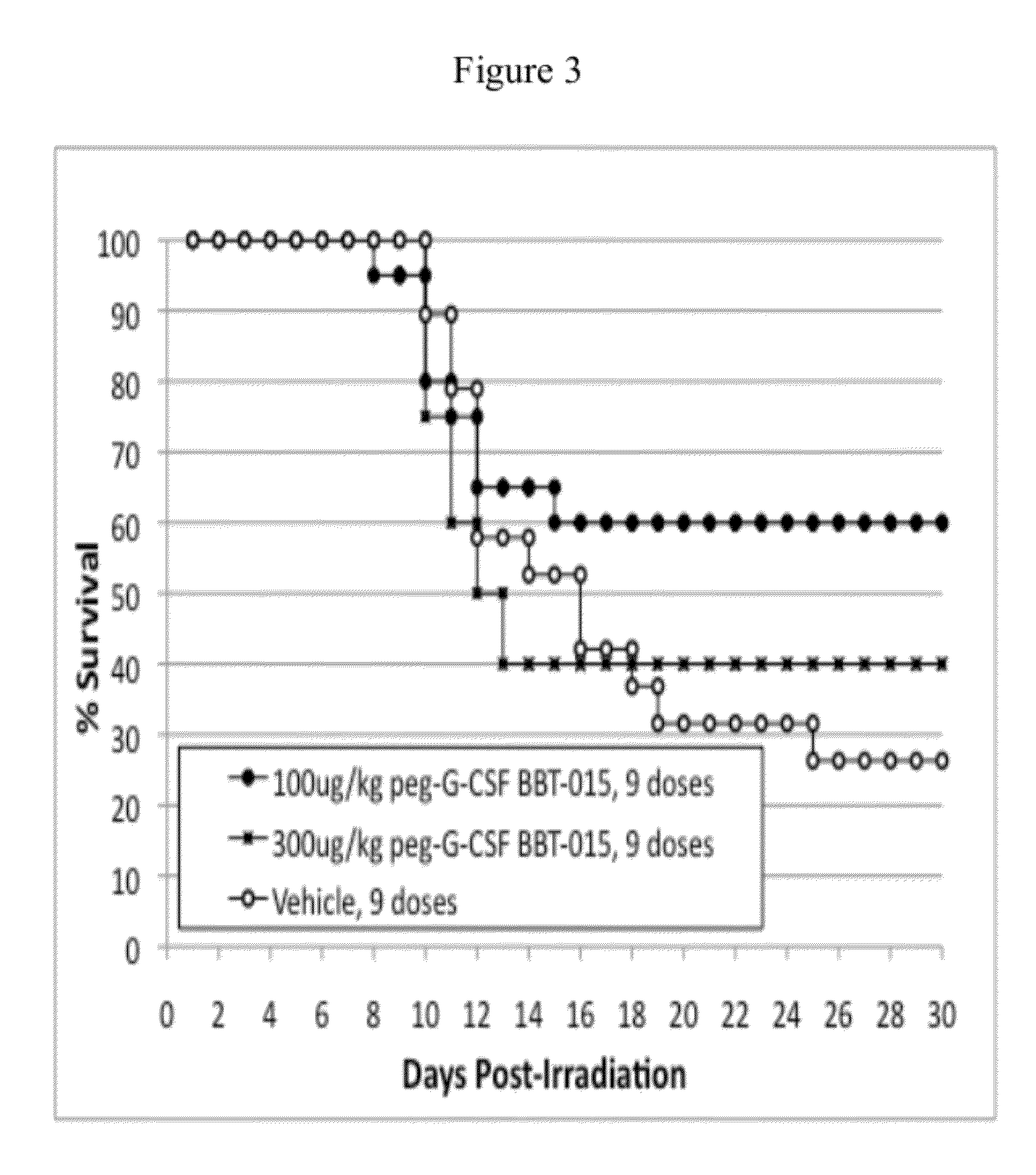Methods and use of growth hormone supergene family protein analogs for treatment of radiation exposure
a growth hormone and supergene family technology, applied in the direction of anti-inflammatory agents, peptide/protein ingredients, anti-microbial agents, etc., can solve the problems of reducing the effectiveness of radiation treatment, gastrointestinal and lung problems, severe morbidity and death, etc., and achieve the effect of accelerating hematopoietic recovery
- Summary
- Abstract
- Description
- Claims
- Application Information
AI Technical Summary
Benefits of technology
Problems solved by technology
Method used
Image
Examples
example 1
Hematopoietic Screening Assay for Radiomitigating Activity of Subcutaneously Administered PEG-G-CSF Analog BBT-015
[0088]This example demonstrates that the dose of PEG-G-CSF analog BBT-015 (100 μg / kg / day or 300 μg / kg / day), administered every other day for a total of 9 doses beginning 24 hr after exposure to lethal doses of ionizing radiation, is efficacious to increase 30 day survival and overall survival time of C57BL / 6 mice. The data also indicate that PEG-G-CSF analog BBT-015 is efficacious at accelerating recovery of multiple types of hematopoietic cells, including neutrophils, white blood cells, lymphocytes, red blood cells and platelets, compared to vehicle solution, following exposure to radiation. The data also indicate that PEG-G-CSF analog BBT-015 is more efficacious at accelerating recovery of hemoglobin and hematocrit levels than vehicle solution following exposure to radiation.
[0089]Groups 1, 2, and 3 were exposed to 776 cGy of radiation delivered as 6...
example 2
Hematopoietic Screening Assay for Radiomitigating Activity of Subcutaneously Administered PEG-GM-CSF Analog BBT-007
[0103]This example demonstrates that 300 μg / kg / day of PEG-GM-CSF analog BBT-007, administered every other day for a total of 9 doses beginning 24 hr after exposure to lethal ionizing radiation, is efficacious for increasing 30 day survival and overall survival time of C57BL / 6 mice, and for accelerating recovery of multiple types of hematopoietic cells, including neutrophils, white blood cells, red blood cells, lymphocytes, and platelets, and for accelerating recovery of hemoglobin and hematocrit levels. The 100 μg / kg / day dosing regimen did not increase 30 survival time when data from both radiation doses were pooled, but did accelerate recovery of some hematopoietic cells. More mice receiving 100 μg / kg / day PEG BBT-007 survived for 30 days than did mice receiving the Control Article in the lower radiation dose (90% survival with PEG BBT-007 versus 74% survival to the Con...
example 3
A Single Administration of PEG-G-CSF Analog BBT-015 Improves 30 Day Survival of Lethally Irradiated Mice
[0115]This example demonstrates that a single administration of BBT-015 administered 24 hours following a lethal dose of radiation is capable of significantly improving 30 day survival of mice compared to vehicle solution. The data also indicate that a single administration of BBT-015 administered 24 hours following a lethal dose of radiation is capable of significantly accelerating recovery of neutrophils, white blood cells, red blood cells, platelets, and hemoglobin and hematocrit levels in irradiated mice compared to vehicle solution. Differences between test groups for these parameters were most pronounced on Days 20 and 25 following radiation exposure.
[0116]The ability of a single administration of the PEG-G-CSF analog BBT-015 to increase 30 day survival in mice after radiation exposure was tested using two different BBT-015 doses (0.3 mg / kg and 1.0 mg / kg) and at two differen...
PUM
| Property | Measurement | Unit |
|---|---|---|
| Time | aaaaa | aaaaa |
| Mass | aaaaa | aaaaa |
| Mass | aaaaa | aaaaa |
Abstract
Description
Claims
Application Information
 Login to View More
Login to View More - R&D
- Intellectual Property
- Life Sciences
- Materials
- Tech Scout
- Unparalleled Data Quality
- Higher Quality Content
- 60% Fewer Hallucinations
Browse by: Latest US Patents, China's latest patents, Technical Efficacy Thesaurus, Application Domain, Technology Topic, Popular Technical Reports.
© 2025 PatSnap. All rights reserved.Legal|Privacy policy|Modern Slavery Act Transparency Statement|Sitemap|About US| Contact US: help@patsnap.com



